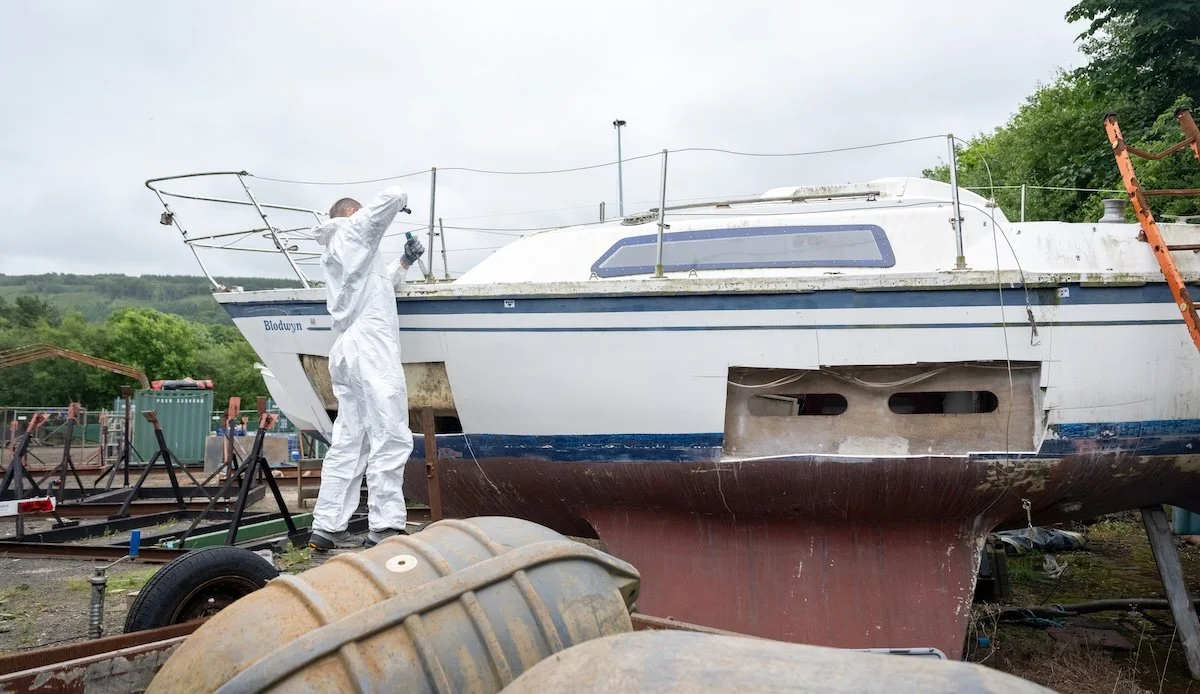Abandoned Fibreglass Boats: A Global Crisis Lurking in Yards
Old fibreglass boats aren’t just rusting relics—they’re environmental time bombs.
In Scotland—and in boatyards around the world—countless fibreglass vessels like the once-proud 30 ft yacht Blodywin are left to deteriorate, with no clear path to disposal. Fibreglass doesn’t biodegrade, and traditional recycling methods can’t handle its complex structure.
According to the International Maritime Organization, over 100,000 fibreglass boats reach end-of-life in the EU each year. Yet many are simply abandoned or scrapped, with to many more globally going untracked. In total, it’s estimated that between 250-500,000 tonnes of composite hulls are left behind each year.
Current disposal methods—landfill, incineration, or repurposing in cement kilns—are costly and damaging to the environment. Fibreglass left to decay can release microplastics and toxic residues while taking up long-term landfill space.
This Isn’t Just a Maritime Issue—It’s a Composite Crisis
The challenge of fibreglass disposal extends beyond boatyards into industrial zones, construction sites, and composite-heavy industries like wind, automotive, and aerospace. With tightening regulations and growing environmental pressure, the world needs scalable, practical recycling solutions.
Extricko’s Vision for Scalable Recovery
Extricko is developing containerised pressolysis units that can be deployed directly to waste sites, boatyards, or manufacturing facilities. These mobile units use superheated steam to break down composites and recover high-purity fibres and resin building blocks—without relying on landfill or chemical solvents.
“The real challenge is getting these boats into a size and shape we can actually handle, Blodwyn taught us that,” says Sam Penhaul, Co-Founder of Extricko. “Over the next month, we’ll show you what that looks like. But the problem we’ve solved which is the big one is what to do with old fibreglass that doesn’t harm the planet.”
Dr. Joe Penhaul, Co-Founder and Chief Technical Officer, adds: “This technology works. We’ve proven that it can recover materials traditional methods lose. Now it’s about funding and deployment—bringing it to scale where it can make real environmental and industrial impact.”
With the right support, Extricko aims to lead the next phase of composite recovery—turning a global waste problem into a viable, closed-loop solution.

